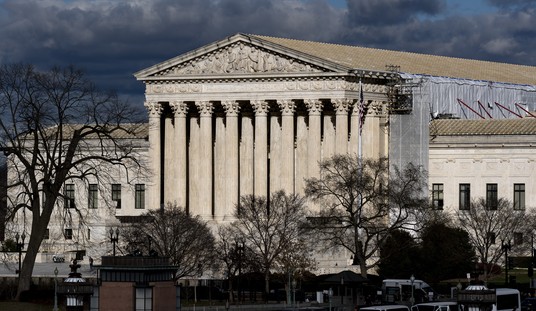On one side of the political aisle, a dramatic turn in the primaries has driven turnout and coverage. On the other, however, a lack of drama has … also driven turnout, if not much media coverage of it. Quietly, Donald Trump’s campaign has continued to break records even while running unopposed for his renomination to the presidential ticket.
In Michigan especially, this looks like a warning sign even as Democrats ramped up turnout in their primary:
Close to 2.3 million Michigan residents cast ballots, or more than 29% of the 7.7 million registered voters, according to unofficial results.
That places the presidential primary among Michigan’s highest for voter participation, and the nearly 1.6 million Democratic ballots cast on Tuesday set a record.
The total number of votes cast places it second behind the 2016 presidential primary, which had competitive contests on both the Democratic and Republican side. Nearly 2.6 million ballots were cast in 2016, a record.
That kind of boost in turnout — around a 400K improvement — is a good sign for Democrats, Politico argues. It shows that the party might be making headway in rebuilding its “blue wall” in the Midwest:
Biden had a spectacular showing on Tuesday, winning every single county in Michigan and blowing Sanders out in three other states that voted, essentially sealing the nomination by leaving his lone rival no plausible path forward. But the big takeaway from the day’s big prize, Michigan, isn’t that Biden is a spectacular candidate. The big takeaway is that he doesn’t need to be.
Two things happened on Tuesday in Michigan. First, Democratic turnout exploded. Second, Biden performed far better with key demographic groups than Clinton did four years ago. If either one of those things happen in November, Trump will have a difficult time winning the state again. If both things happen, the president can kiss Michigan’s 16 electoral votes goodbye—and with them, more than likely, the electoral votes of Wisconsin and Pennsylvania.
There goes the White House.
Far-fetched? Hardly. Beating Trump in November does not require an electoral juggernaut. This is because Trump himself, despite his frequent boasts to the contrary, is no electoral juggernaut. The president won the Electoral College in 2016 by a whisker. He carried three states—Michigan, Wisconsin, Pennsylvania—by a combined 77,744 votes. Notably, in those states, Clinton won roughly 600,000 fewer votes than Barack Obama did in 2012. The reason: a failure to mobilize black voters, and dismal performances among both affluent suburbanites and working-class whites.
All true enough, especially the part about how poorly Hillary turned out traditional Democratic voters. Four years ago, Biden would have had a better chance of winning, in part because Trump didn’t actually change Republican turnout in Michigan or Wisconsin, and barely shifted it in Pennsylvania. Politico assumes that Trump’s appeal and turnout ability has remained static.
But has it? Yesterday’s primaries in Michigan and Missouri say something very different. Trump won over 639,000 votes in Michigan, more than Sanders did, while running against no real competition at all. To compare, consider Barack Obama’s results in 2012 running unopposed for his renomination, when he received 174,000 votes in Michigan.
In Missouri, the numbers are also rather dramatic. Barack Obama won just under 65,000 votes in the Show-Me State eight years ago, while garnering 88,4% of the Democratic vote. Trump got 300,000 votes last night and 99% of the GOP vote, again significantly outpolling Bernie Sanders in last night’s Democratic contest. Trump even outpolled 2012 GOP winner Rick Santorum by more than double his 139K win in the very competitive early-state primary that year. In fact, Trump just came up short of getting more than the total number of votes cast in the 2012 Missouri primaries combined (326,438), the last one in the state with an incumbent president on the ticket.
Does this mean Trump will win both states? Not necessarily, but these large turnouts in meaningless GOP primaries do show something significant. Four years ago, the Trump campaign’s GOTV structure was haphazard at best; they relied heavily on the RNC for assistance in those efforts. This time around, the melding of the two and the massive resources raised by the combined effort look very much like they are paying off in a big expansion in voter turnout. These big numbers in otherwise throwaway contests are not just a coincidence. This time around, it looks like Trump might very well find bigger turnout in these swing states rather than just rely on an incompetent candidate to leave hundreds of thousands of votes on the table.
That will make this race a stamina contest. And at the moment, the stamina gap seems very large, and it’s not favoring Uncle Joe.








